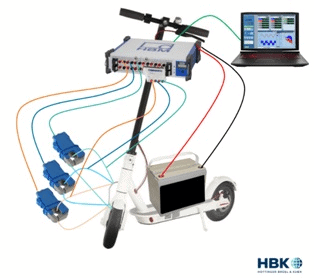Article: Introduction to Measuring Electric Power During Transients
The job of testing mobile power, transient power, in-vehicle power and efficiency has several unique challenges . One is that there is no steady state frequency: vehicle speed is constantly changing - increasing or decreasing. Only very rarely does a driver get in a car and travel at a fixed speed for the entire journey.
There are some issues with the way traditional instruments handle tracking frequency. A lot of the more traditional instruments were originally developed for the grid, so they use a phase lock loop system and require a fixed frequency. That means using them in a vehicle where speed and electrical frequency is constantly changing creates some real challenges in obtaining accurate, reliable measurements.
There are constantly changing states in these electric machines, specifically for road testing. Think of vehicles accelerating from a stoplight and hybrids that are clutching in and out. Transients can occur, such as hitting things or wheels slipping on ice. There are a variety of issues that can come up.
Tracking a machine as it slows down over time is difficult with traditional equipment. HBK combats this issue by using a cycle detect system. Digital algorithms that track zero crossings are used to determine cycles for making power calculations. This allows dynamic testing.

Transient Power Test Example
Electric Scooter Mobile Power Test
This example of a transient power test was done on an electric scooter. The three-phase voltage cables were pulled out and mounted onto an HBK Genesis test systems onboard and hooked up to a 12-volt battery. It was then connected to a computer for data acquisition and visualization. This set up is shown above. The scooter was then ridden around a track, a track with a hill in it, and data was taken live.